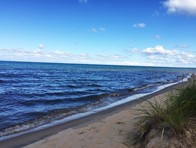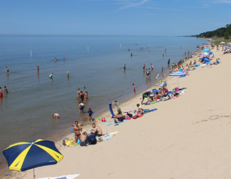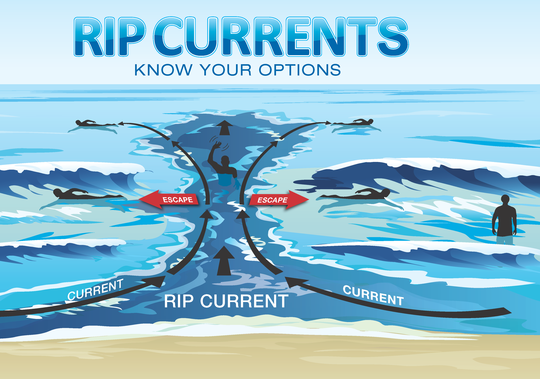June 25, 2021
What do the results mean?
If the results of three test samples average to less than 300 E. coli per 100 milliliters of water, the risk of recreational water illnesses is minimal (single-day geometric mean). High levels of E. coli indicate fecal contamination and the possible presence of other harmful bacteria, parasites and viruses in the water. However, surges in E. coli can be short-lived. Results are posted weekly during the summer at www.miOttawa.org/BeachWatch.


Be healthy!
Ottawa County has beautiful beaches!
However, natural bodies of water contain microorganisms regardless of how clean or clear the water may look. According to the Centers for Disease Control and Prevention, pathogens that cause recreational water illnesses are spread by swallowing, breathing in the mists or aerosols from, or having contact with contaminated water in swimming pools, water parks, hot tubs, interactive fountains, water play areas, lakes, rivers or oceans.
|
How does water become contaminated?
- animal waste
- rain and agricultural runoff
- faulty septic systems
- sewer overflows
- naturally occurring chemicals and minerals
- manufacturing processes
- local land use practices (fertilizers and pesticides)
How can bacteria and other microbes in beach water affect me?
Beaches everywhere, and at all times, have microorganisms which can cause illness. Exposure to beach water with high levels of microbial contamination may cause ear, eye, nose and throat infections; gastrointestinal illness; or skin rashes. It may also lead to parasitic infections.
Follow these tips to help avoid or minimize recreational water illnesses:
- Do not swallow lake water and avoid getting water in your mouth.
- Wash your hands with soap and water before eating.
- Take your kids on bathroom breaks and be sure young children wear clean swim diapers.
- Do not swim when you are sick. You can spread germs in the water and make other people sick.
- Do not swim in water that appears murky, smells foul or looks polluted in any way.
- Avoid swimming immediately after heavy rainfall.
- Do not feed seagulls.
- Shower when you return home.
Learn more at miOttawa.org/BeachWatch

Wear a Personal Flotation Device (PFD)!
Nearly 84% of drowning victims were not wearing a PFD. Wearing a PFD is the easiest way to ensure you and your family’s safety. State law requires children six and younger to be fitted with a Type I or II PFD at all times while on the open deck area of a boat. It is best for all occupants of the vessel to regularly wear a PFD at all times when underway.
|
Make sure your vests are fitted properly for your body size/weight and meet the United States Coast Guard standards. To verify you have the correct size, look on the inside or back of the PFD for the size/weight information. Children and unsure swimmers should also wear a PFD while around the beaches and waters.
 Image courtesy of boatUS.org

Always pay attention to the flags posted at the beaches. Flags are placed based on weather and water conditions.
Green = Safe Conditions
Yellow = Elevated Risk, Proceed with Caution
Red = Do NOT Enter the Water. Red flag conditions mean the water conditions are extremely hazardous and can include strong rip currents as well as structural currents. Even the strongest swimmers struggle in these conditions and may drown!
|
If you’re in a rip current DO NOT PANIC! Remain calm, get to your back and let the rip current take you out. Once you reach the end, get to the side of it and try to swim back. This is known as “Flip, Float, Follow”. Flip to your back. Float out with the current. Follow the current to see which way it’s flowing and then swim perpendicular to get out of it.
 Call 911 if someone is struggling in the water and needs assistance. Make the call or yell to a bystander to call. Then “Throw, Row, Go”. Throw an object to the person, such as a life ring or a throw rope—any object the struggling person can grab onto to help bring them back in. Row by finding a boat or floating object you can use to row out to help the person. Go by to the victim by using a PFD. This is the last option and should only be used when no other means are available to prevent drowning yourself.
For more information on water and boating safety, contact ewestveer@miottawa.org or visit www.greatlakeswatersafety.org.
Water Safety Resources
|